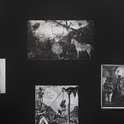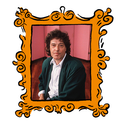The psychoanalyst Stephen Grosz’s first book, The Examined Life: How We Lose and Find Ourselves (2013), was a surprise bestseller—it was translated into 30 languages and has sold over 40,000 copies so far. Consisting of 31 case studies from his 25 years as a practising therapist, it was—according to his publisher—“an attempt to distil over 50,000 hours of conversation into pure psychological insight, without the jargon”. One of the reasons for its mass appeal is that it attracted fiction and nonfiction lovers alike, because each case study read like a short story. The legendary New York Times critic Michiko Kakutani praised the book as being “like a combination of Chekhov and Oliver Sacks”.
It was published years before the psychotherapist Esther Perel started her podcast Where Should We Begin? and before Showtime—and later, the BBC—began to air the reality programme Couples Therapy. This was also before Prince Harry was filmed undergoing EMDR (eye movement desensitisation and reprocessing) therapy on The Me You Can’t See, the tantalisingly titled Oprah Winfrey documentary series. There was, however, clearly already an appetite for rootling around other people’s psyches.
At the Bath Literature Festival in 2014, Grosz mentioned that his next book would be called Seven Obstacles to Love and was part-inspired by a conversation with his daughter—who was 11 at the time—about Peter Capaldi taking over the lead in Doctor Who. He said, “I realised that she had a crush on the last Doctor Who, Matt Smith, and I thought, ‘Oh my god, she is having feelings. I’m going to have to write this down.’” Possibly to the disappointment of Whovians everywhere but conceivably to the relief of his daughter, Doctor Who isn’t referenced in Love’s Labour, his eventual second book.
As his epigraph, he has chosen this quotation from Rilke’s Letters to a Young Poet: “For one human being to love another; that is perhaps the most difficult of all our tasks, the work for which all other work is but preparation.” In examining this concept, the author doesn’t spare himself: Love’s Labour begins in 1983, when he had his first psychoanalytic session as a patient—part of his training—and says of himself, “I was thirty-one years old and immature. I was impulsive and quick to fall in love, and often confused intensity with intimacy.” He goes on to elucidate the difference between surrender and submission: “It became clear to me that there is a vital distinction to be made between surrendering to something (or someone) and submitting to it. This distinction is something that could have saved me some suffering if I’d considered it sooner. To surrender is to let go, to experience a release. When two people surrender to each other, they feel alive, empowered, accepted. They feel love. Submission, or submissiveness, is different. It too begins with a longing to be loved – and yet, submitting to another person leaves us feeling like we’ve fallen under their control.”
Grosz’s self-awareness is part of what made The Examined Life so engaging: in that book he mentioned a patient, Graham C, whom he found boring. He was pragmatic about this and prepared for his sessions by drinking a coffee and splashing cold water on his face before, ultimately, reaching a more profound conclusion about why Graham C bored him—he was deliberately being boring as a form of aggression that meant he didn’t have to engage with living in the present.
‘I was thirty-one years old and immature. I was impulsive and quick to fall in love, and often confused intensity with intimacy’
Similarly, in Love’s Labour, the author recounts his own fallibility when a new patient asks to see him urgently as she seems unable to post her wedding invitations—even though she does want to marry her fiancé. The patient, Sophie A, relates a dream where she is in a changing room with her parents and preparing to shower, when she realises that they will instead all be sent to a gas chamber. She is embarrassed to discuss it with Grosz as he is Jewish and she isn’t. Baffled by what the dream can mean, he asks her to talk him through it again. The second time she discusses her dream, she mentions that the changing room was not particularly big but about the same size as the room they are in. Grosz realises that this, the size of the room, is the key to it all.
The two of them untangle that the dream is not about Jewishness or the Holocaust, but instead about her fear that by moving forward in her life—that is, changing—she will annihilate her parents. Grosz says to her that his consulting room is also a kind of changing room: “a room where people come to change”. She corroborates his theory about her fears, telling him “that sometimes after saying goodbye to her parents and walking away from their house, she worried that they didn’t talk to each other when she wasn’t there. Whenever she brought them a problem—a money worry, a medical issue, something wrong with her flat—they seemed to grow close again.” The analyst and patient agree to continue their sessions after this breakthrough, except she misses her next one and he doesn’t hear from her again for many years.
Grosz doesn’t always feel he succeeds with his analysands, and one notably makes a pass at him at the end of her session. He is troubled enough by this—and the fact that she doesn’t return after he rejects her—to discuss it with his supervisor. The supervisor, Dr Glasser, reassures him he did the right thing by not offering her more time, after she made a pass, to discuss it: “You’d have been signing up to a shady side-deal: you flirt with me, I’ll give you more time. She needs you to have boundaries, so she can too.” She had been incestuously abused by her uncle when she was 15 and he was 19, and had also gone to prison after she stole £30,000 from her employer, which she did not spend.
There is also a case study of a woman who becomes an escort and another of a man who thinks the pubic hair he finds in his wife’s discarded underwear is proof of her infidelity. Most devastatingly of all, in a bracingly macabre chapter, Grosz treats a patient who is stuck—both physically and emotionally—after the suicide of his girlfriend.
Later in the book, there is a rather vivid account of Grosz’s friendship with two fellow shrinks, Susan and Cora, and their respective husbands, Paul and Martin. The five professionals meet and socialise at conferences until Cora has an affair with Paul, Susan’s husband. A showdown ensues, during which Susan berates Cora for wanting a life with Paul. “You want?” exclaims Susan. “Hitler wanted Poland.”
Grosz explores the two women’s conflicting positions—Susan’s is that the true aim of psychoanalysis is to accept reality, whereas Cora believes more in acting in accordance with one’s true desires and then accepting the consequences. As for Grosz, he reasons that neither of these positions should be the goal; his hope, instead, is that patients simply come to understand themselves better. It would spoil this particular story to relay what ultimately happens, but it is from this chapter that the book’s title comes: “They had loved, hated, married and divorced. But they were still a couple, still doing love’s labour.”
Grosz is an exceptionally deft writer and his insights are as revelatory as ever. I don’t think it matters too much that this book feels as though it is more about him than any of the patients, mentors or friends he mentions in its pages. I also don’t think he can quite be blamed for the fact that the expectations for Love’s Labour are so high; but, whether he meets those expectations or not, the book acts as a powerful antidote to the idea that therapy can be performed by AI. As he has said elsewhere: “there’s something about the experience of being listened to by another human who is facing the same existential issues you are facing, and has faced them in their life too: which career, which partner, children or no children, how do I live my life, what is the right way to be?”












